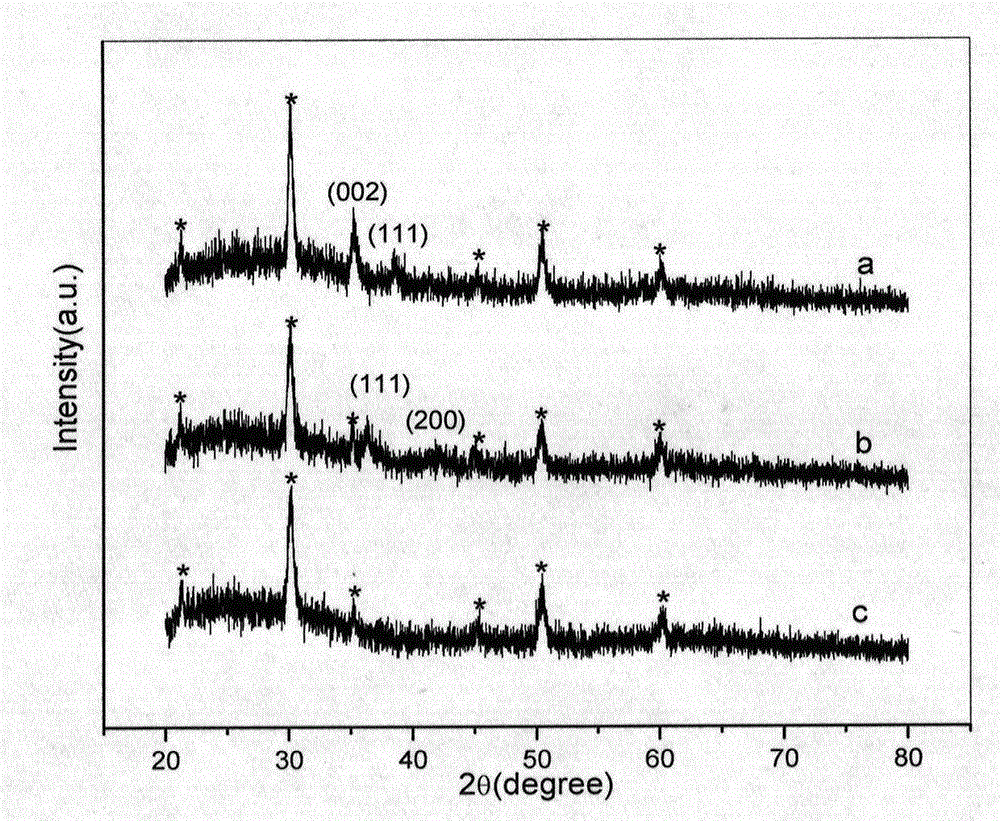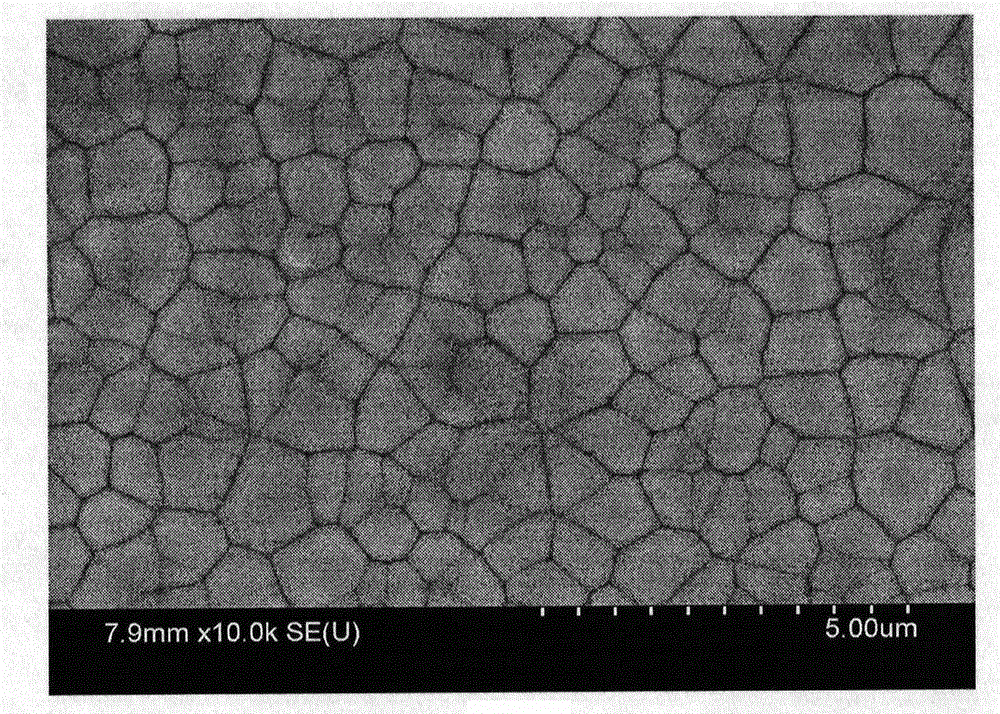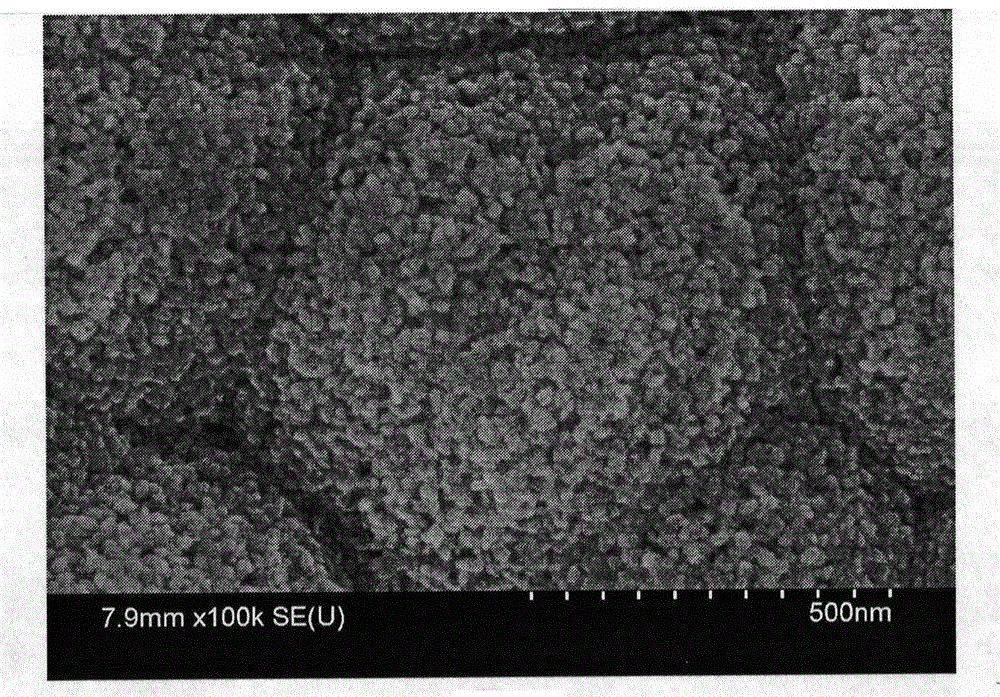Preparation method of non-enzyme glucose sensor electrode material based on CuO film
A technology of glucose sensor and electrode material, applied in the field of electrochemical material preparation, can solve the problems affecting the practicability of non-enzyme glucose sensor, electrode stability and poor electrocatalytic activity, and achieves reproducibility, reusability and simple structure. , the effect of orderly structure
- Summary
- Abstract
- Description
- Claims
- Application Information
AI Technical Summary
Problems solved by technology
Method used
Image
Examples
Embodiment 1
[0023] (1) The ITO conductive glass is ultrasonically cleaned by acetone, ethanol, and deionized water for 20 minutes each, and dried with nitrogen to form a clean substrate for use;
[0024] (2) Electrochemical deposition method was used to prepare cuprous oxide film. The experimental conditions were: the electrolyte used was a mixture of copper acetate, sodium acetate and cetyltrimethylammonium bromide, and the concentration of copper acetate was 0.02mol / L, the concentration of sodium acetate is 0.08mol / L, and the concentration of cetyltrimethylammonium bromide is 0.002mol / L; the electrolyte temperature is controlled at 60°C by a constant temperature water bath, and the three-electrode electrochemical cell is used for deposition. The electrode is ITO conductive glass, the counter electrode is a platinum sheet electrode, and the reference electrode is an Ag / AgCl electrode. The three electrodes were inserted into the solution, a constant voltage of -0.2V was applied, and the ...
Embodiment 2
[0027] (1) The FTO conductive glass was ultrasonically cleaned by acetone, ethanol, and deionized water for 20 minutes each, and dried with nitrogen to form a clean substrate for use;
[0028] (2) Electrochemical deposition method was used to prepare cuprous oxide film. The experimental conditions were: the electrolyte used was a mixture of copper acetate, sodium acetate and cetyltrimethylammonium bromide, and the concentration of copper acetate was 0.02mol / L, the concentration of sodium acetate is 0.04mol / L, and the concentration of cetyltrimethylammonium bromide is 0.02mol / L; the electrolyte temperature is controlled at 70°C by a constant temperature water bath, and the three-electrode electrochemical cell is used for deposition. The electrode is FTO conductive glass, the counter electrode is platinum sheet electrode, and the reference electrode is Ag / AgCl electrode. Insert the three electrodes into the solution, apply a constant voltage of -0.25V, and deposit for 10 minute...
Embodiment 3
[0031] (1) The ITO conductive glass is ultrasonically cleaned by acetone, ethanol, and deionized water for 20 minutes each, and dried with nitrogen to form a clean substrate for use;
[0032](2) Electrochemical deposition method was adopted to prepare cuprous oxide film. The experimental conditions were: the electrolyte used was a mixture of copper acetate, acetic acid and sodium lauryl sulfate, the concentration of copper acetate was 0.02mol / L, and the concentration of acetic acid was 0.06mol / L, the concentration of sodium lauryl sulfate is 0.008mol / L; the temperature of the electrolyte is controlled at 20°C by a constant temperature water bath, and a three-electrode electrochemical cell is used for deposition. The working electrode is ITO conductive glass, and the counter electrode is platinum. Sheet electrode, the reference electrode is Ag / AgCl electrode. The three electrodes were inserted into the solution, a constant voltage of -0.3V was applied, and the deposition time w...
PUM
| Property | Measurement | Unit |
|---|---|---|
| Sensitivity | aaaaa | aaaaa |
Abstract
Description
Claims
Application Information
 Login to View More
Login to View More - R&D
- Intellectual Property
- Life Sciences
- Materials
- Tech Scout
- Unparalleled Data Quality
- Higher Quality Content
- 60% Fewer Hallucinations
Browse by: Latest US Patents, China's latest patents, Technical Efficacy Thesaurus, Application Domain, Technology Topic, Popular Technical Reports.
© 2025 PatSnap. All rights reserved.Legal|Privacy policy|Modern Slavery Act Transparency Statement|Sitemap|About US| Contact US: help@patsnap.com



